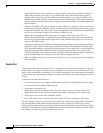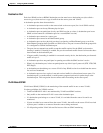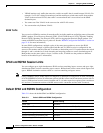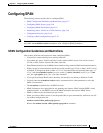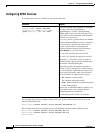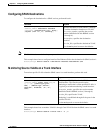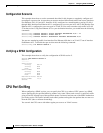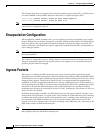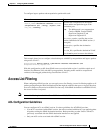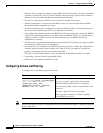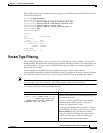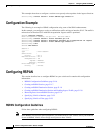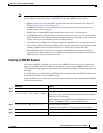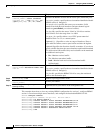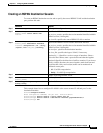
51-12
Software Configuration Guide—Release 15.0(2)SG
OL-23818-01
Chapter 51 Configuring SPAN and RSPAN
Encapsulation Configuration
This example shows how to use queue names and queue number ranges for the CPU as a SPAN source
on Catalyst 4900M, Catalyst 4948E, Supervisor Engine 6-E, or Supervisor Engine 6L-E:
Switch(config)# monitor session 2 source cpu queue control-packet rx
Switch(config)# monitor session 3 source cpu queue 10 rx
Note For Catalyst 4900M, Catalyst 4948E, Supervisor Engine 6-E, and Supervisor Engine 6L-E,
control-packet is mapped to queue 10.
Encapsulation Configuration
When configuring a SPAN destination port, you can explicitly specify the encapsulation type used by
the port. Packets sent out the port are tagged in accordance with the specified mode. (The encapsulation
mode also controls how tagged packets are handled when the ingress packet option is enabled.) The
Catalyst 4500 series switch supervisor engines support ISL encapsulation and 802.1q encapsulation, as
well as untagged packets.
Note Catalyst 4900M, Catalyst 4948E, Supervisor Engine 6-E, and Supervisor Engine 6L-E support only
802.1q encapsulation.
The “replicate” encapsulation type (in which packets are transmitted from the destination port using
whatever encapsulation applied to the original packet) is not supported. If no encapsulation mode is
specified, the port default is untagged.
Ingress Packets
When ingress is enabled, the SPAN destination port accepts incoming packets (potentially tagged
depending on the specified encapsulation mode) and switches them normally. When configuring a SPAN
destination port, you can specify whether the ingress feature is enabled and what VLAN to use to switch
untagged ingress packets. (Specifying an ingress VLAN is not required when ISL encapsulation is
configured, as all ISL encapsulated packets have VLAN tags.) Although the port is STP forwarding, it
does not participate in the STP, so use caution when configuring this feature lest a spanning-tree loop be
introduced in the network. When both ingress and a trunk encapsulation are specified on a SPAN
destination port, the port goes forwarding in all active VLANs. Configuring a non-existent VLAN as an
ingress VLAN is not allowed.
By default, host learning is disabled on SPAN destination ports with ingress enabled. The port is also
removed from VLAN floodsets, so regular traffic is not switched out of the destination port. If learning
is enabled, then traffic for hosts learned on the destination port is switched out the destination port. A
host connected to the SPAN destination port will not receive broadcast ARP requests and will not
respond. You can also configure static host entries (including a static ARP entry and a static entry in the
MAC-address table) on SPAN destination ports.
Note This configuration does not work if the SPAN session does not have a source configured; the session is
half configured with only the SPAN destination port.



